National Nutrition Month: Focus on Inflammation – Understanding Your Body’s Fight and How Food Can Be Your Ally
Inflammation – the word conjures images of a swollen ankle after a sprain or the redness around a fresh cut. This is acute inflammation, a vital part of our body’s natural defense system. But beneath the surface, a more insidious enemy can lurk – chronic inflammation. This low-grade, long-lasting fire within can wreak havoc on our health, often going unnoticed until it’s caused significant damage.
What is Inflammation?
At its core, inflammation is the body’s response to injury or infection. It’s a coordinated effort by our immune system to isolate and neutralize threats. Imagine an army of white blood cells rushing to the scene, redness and swelling developing as they battle the invader. This acute inflammation is a temporary process, designed to heal and repair. However, when this process lingers, it transforms into the silent threat – chronic inflammation.
The Body’s Defense System Gone Awry:
Chronic inflammation is like having your body’s defense system on high alert for an extended period. This constant state of “war” can damage healthy tissues and organs in the crossfire. Think of a battlefield where the fight has become so intense that even the surrounding structures aren’t spared.
Chronic Inflammation: A Hidden Culprit in Disease Development:
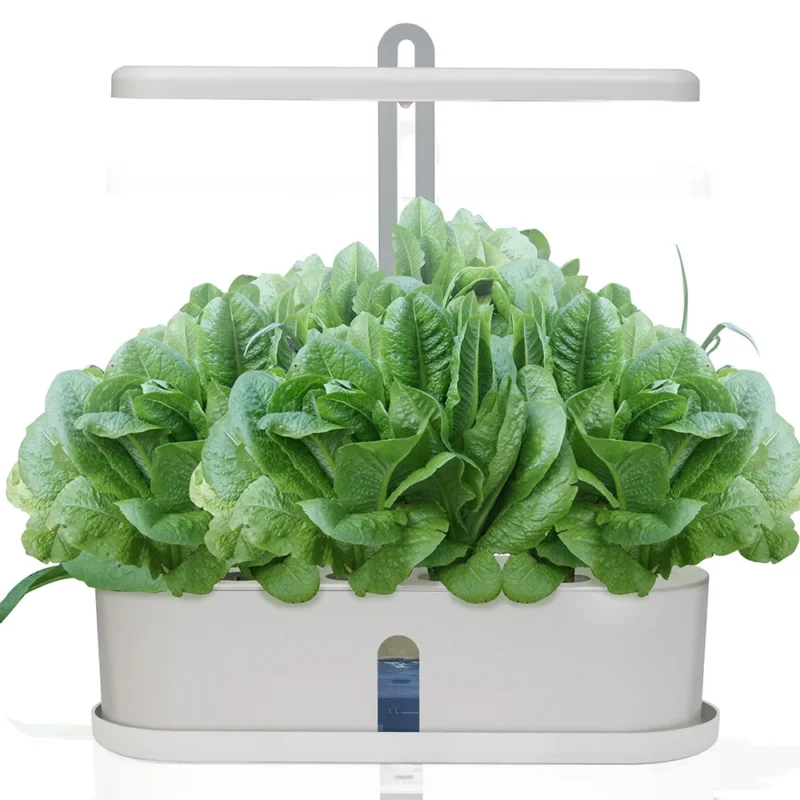
While essential for healing, chronic inflammation is now linked to a multitude of chronic diseases. Research suggests it plays a significant role in the development of:
- Heart Disease: Chronic inflammation can damage blood vessels and contribute to the buildup of plaque, increasing the risk of heart attack and stroke.
- Diabetes: Inflammation can impair the body’s ability to use insulin, leading to high blood sugar levels and diabetes.
- Arthritis: Chronic inflammation in joints is a hallmark of rheumatoid arthritis and other types of arthritis.
- Autoimmune Diseases: In these conditions, the immune system mistakenly attacks healthy tissues, and chronic inflammation is often a key player.
- Certain Cancers: Chronic inflammation can create an environment conducive to the development and progression of some cancers.
-
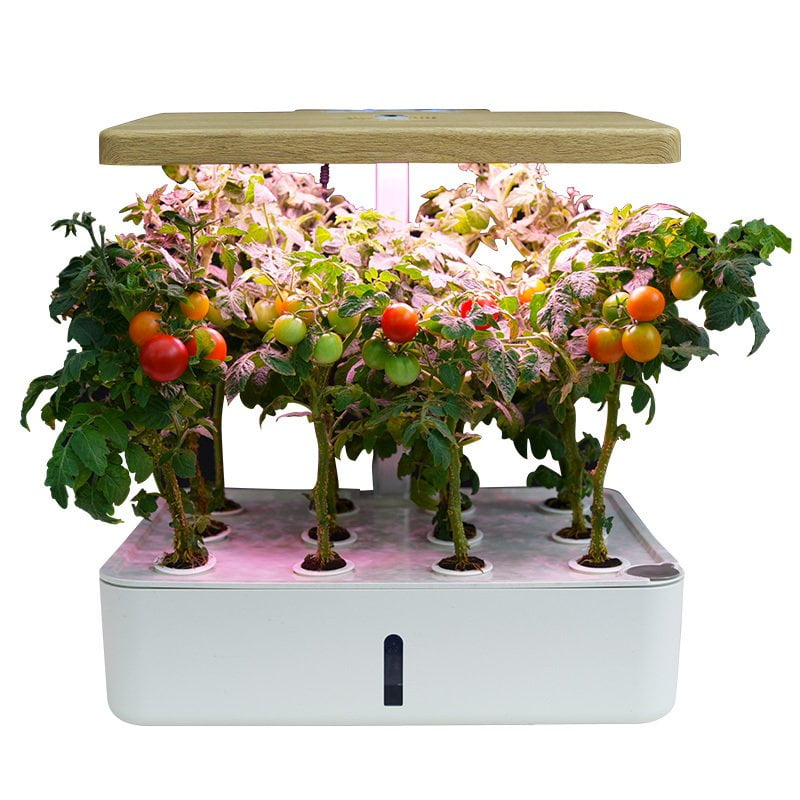
Best Hydroponic LED Plant Grow System: Complete 12-Pod Kit
$248.90Select options This product has multiple variants. The options may be chosen on the product page -
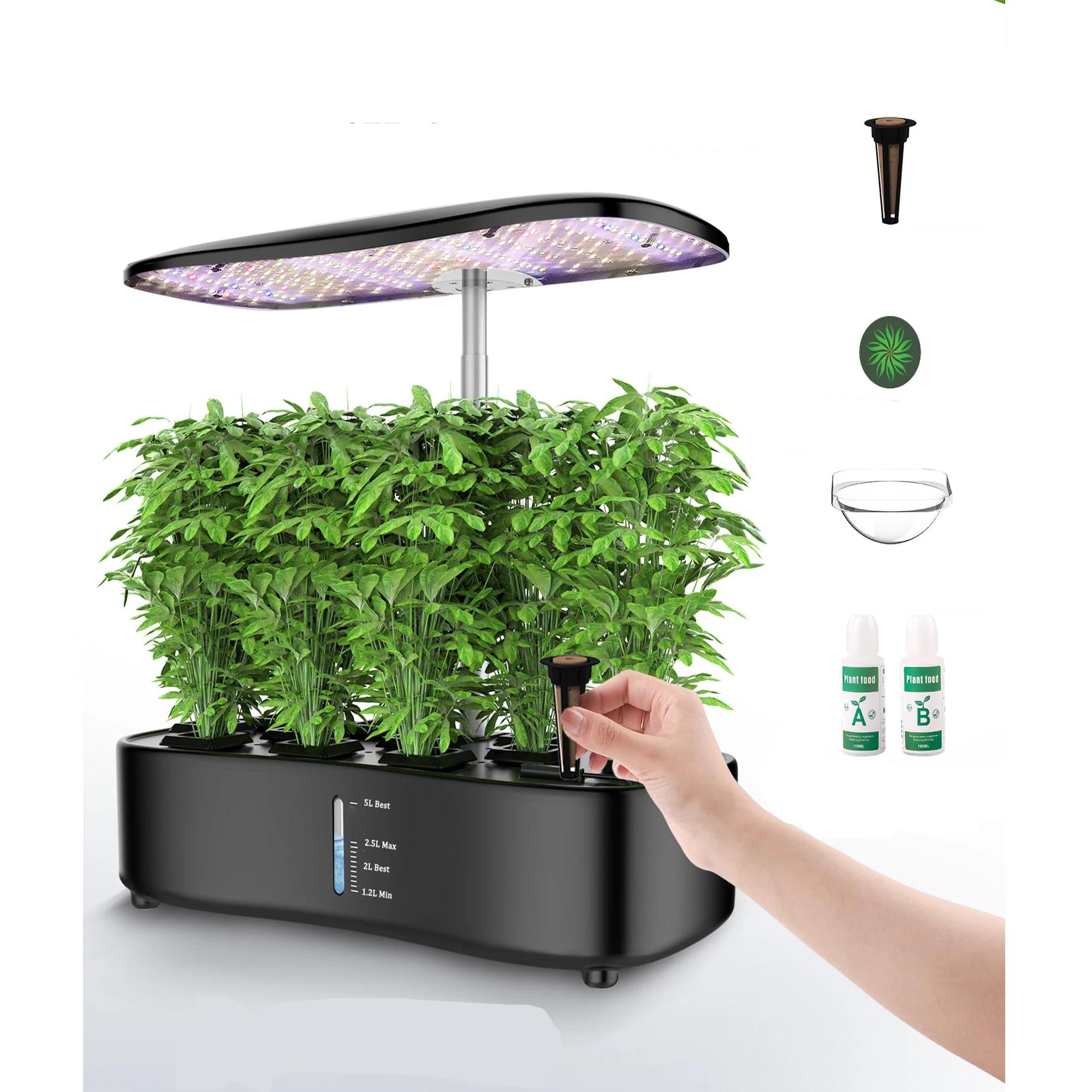
-

Bowl Lotus Lotus Seed Fish Tank Hydroponic Plant Indoor Hydroponic
$20.26 – $38.15Select options This product has multiple variants. The options may be chosen on the product page -

Garden Tools: 9-Piece Aluminum Alloy Set with Silicone Handles
$84.03Select options This product has multiple variants. The options may be chosen on the product page
Recognizing the Signs of Chronic Inflammation:
Since chronic inflammation often develops slowly, its symptoms can be subtle and easily dismissed. However, some common signs you might experience include:
- Fatigue: A persistent feeling of tiredness that doesn’t improve with rest can be a sign of chronic inflammation.
- Joint pain or stiffness: This can be a dull ache or a sharp, stabbing pain, often worse in the morning or after sitting for long periods.
- Weight gain or difficulty losing weight: Chronic inflammation can disrupt metabolism and make weight management more challenging.
- Skin problems: Eczema, psoriasis, and other skin conditions can be linked to chronic inflammation.
- Digestive issues: Bloating, diarrhea, and constipation can be signs of inflammation in the digestive system.
- Difficulty sleeping: Chronic inflammation can disrupt sleep patterns, leading to insomnia or restless sleep.
Early Detection is Key:
The good news? Identifying chronic inflammation early offers a crucial window for intervention. By recognizing the signs and consulting with a healthcare professional, you can work towards managing it and potentially reducing the risk of future health complications. Blood tests and other diagnostic tools can help assess the presence and source of inflammation.
Addressing chronic inflammation often involves a multi-pronged approach, encompassing dietary changes, lifestyle modifications, and potentially, medication. By understanding this silent threat and taking proactive steps, we can empower ourselves to live healthier, more vibrant lives.

Decoding the Fire Within The Science Behind Inflammation and How Food Plays a Role
The battle against chronic inflammation takes place at a microscopic level within our cells. Imagine tiny factories constantly working to keep us healthy. When these factories are bombarded by harmful molecules called free radicals, a state of oxidative stress occurs. These free radicals, like rogue agents, damage healthy cells and trigger the body’s inflammatory response.
Free Radicals and Oxidative Stress: The Spark That Ignites the Fire
Free radicals are unstable molecules with unpaired electrons, making them highly reactive. They can come from sources like pollution, cigarette smoke, and even normal cellular processes. When free radicals begin to outnumber the body’s natural antioxidants, which neutralize them, oxidative stress ensues. This stress signal triggers inflammation as the immune system tries to contain the damage.
The Gut Microbiome: A Balancing Act Influencing Inflammation
Our intestinal tract houses a vast ecosystem of trillions of bacteria, collectively known as the gut microbiome. This complex community plays a crucial role in digestion, nutrient absorption, and surprisingly, inflammation. When the gut microbiome is diverse and balanced, it helps regulate the immune system and keeps inflammation in check. However, an imbalance in gut bacteria, often caused by diet and lifestyle factors, can promote inflammation.
Food as Information: What We Eat Sends Signals
The food we choose doesn’t just provide fuel; it sends signals to our immune system. Diets high in processed foods, refined sugars, and unhealthy fats can tip the balance toward inflammation. These foods often lack essential nutrients and can promote the growth of unhealthy gut bacteria.
The Anti-Inflammatory Power of Nutrients:
Fortunately, the food we eat can also be a powerful tool in fighting inflammation. Antioxidants found abundantly in fruits and vegetables, act as firefighters, neutralizing free radicals and preventing oxidative stress. Vitamins like vitamin D and minerals like magnesium play a role in regulating the immune system and reducing inflammation.
Fueling the Fight: Building an Anti-Inflammatory Diet with Powerful Food Choices
Nature provides a vibrant arsenal of anti-inflammatory foods. Consider these powerhouses:
Fruits and Vegetables: A Rainbow of Antioxidants
Fruits and vegetables are brimming with antioxidants. Different colors offer a unique spectrum of benefits. Red berries are rich in anthocyanins, while orange and yellow vegetables are packed with carotenoids. Leafy greens are loaded with vitamins, minerals, and antioxidants. Aim for a rainbow on your plate to maximize your anti-inflammatory potential.

Whole Grains: Fiber for a Healthy Gut
Whole grains like brown rice, quinoa, and oats are rich in fiber, essential for gut health. Fiber feeds the good bacteria in our gut, promoting a healthy microbiome and reducing inflammation. Whole grains also provide sustained energy and help regulate blood sugar levels, further contributing to a healthy inflammatory response.
Omega-3 Fatty Acids: The All-Stars of Anti-inflammation
Fatty fish like salmon, sardines, and mackerel are champions of anti-inflammatory nutrition. They are rich in omega-3 fatty acids, which have been shown to reduce inflammation throughout the body. These fats also promote heart health and brain function. If you don’t enjoy fish, consider flax seeds, walnuts, and chia seeds as plant-based sources of omega-3s.
Nuts and Seeds: Nutrient Powerhouses
Nuts and seeds are packed with anti-inflammatory nutrients like healthy fats, fiber, and antioxidants. Almonds, walnuts, and chia seeds are particularly beneficial. Enjoy them in moderation as a healthy snack or sprinkle them on salads and yogurt for an added anti-inflammatory punch.
Spicing Up Your Life: Anti-Inflammatory Herbs and Spices
Spices not only add flavor to your food but can also offer potent anti-inflammatory benefits. Turmeric, with its active compound curcumin, is a superstar in this category. Ginger, garlic, and cayenne pepper also possess anti-inflammatory properties. Explore the world of herbs and spices to create delicious and anti-inflammatory meals.
Beyond the Plate: Lifestyle Strategies to Complement Your Anti-Inflammatory Journey
- Sleep: The Body’s Repair Shop: (How sleep deprivation can worsen inflammation)
- Stress Management: Taming the Cortisol Response: (Techniques for relaxation like yoga and meditation)
- Regular Exercise: Moving Your Body for Better Health: (The anti-inflammatory benefits of physical activity)
- Hydration: Keeping Your Body Functioning Optimally: (Importance of drinking enough water for flushing toxins)
- Quality Sleep Environment: (Creating a sleep-conducive environment for better sleep)
- Identifying Stressors: (Recognizing what triggers stress in your life)
- Mindfulness Techniques: (Practicing mindfulness meditation for stress reduction)
- Deep Breathing Exercises: (Simple breathing techniques for calming the nervous system)
- Relaxation Activities: (Exploring activities like yoga, tai chi, or spending time in nature)
- Building a Support System: (Connecting with friends, family, or a therapist for emotional support)
Taming the Flames: Practical Tips for Managing Stress and Promoting Relaxation
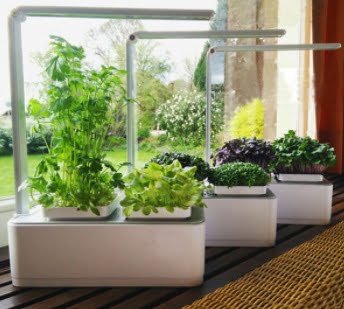
The Gut-Brain Connection: How Gut Health Impacts Inflammation and Overall Well-being
Imagine a thriving ecosystem teeming with trillions of tiny residents – this is your gut microbiome. This complex community of bacteria, along with other microbes, plays a far more significant role than just breaking down food. Recent research reveals a fascinating connection between your gut and your brain, impacting not only digestion but also inflammation and overall well-being.
The Gut Microbiome: A Diverse Community Within You
The gut microbiome is a unique fingerprint, as diverse as the human population itself. This ecosystem houses hundreds of different species of bacteria, some beneficial, some neutral, and a few potentially harmful. A healthy gut microbiome is characterized by a balanced and diverse population of these bacteria.
The Gut-Immune Connection: A Two-Way Street
The gut and the immune system are in constant communication. The gut lining acts as a barrier, filtering out harmful substances and pathogens while allowing the absorption of nutrients. The trillions of bacteria in your gut help train your immune system to differentiate between friend and foe. They produce certain metabolites that communicate with immune cells, helping to regulate inflammatory responses throughout the body.
Probiotics and Prebiotics: Nurturing Your Gut Garden
Probiotics are live bacteria similar to the beneficial ones already present in your gut. Consuming probiotic-rich foods like yogurt, kimchi, and kombucha can help replenish and support healthy gut flora. Prebiotics, on the other hand, are the food for your gut bacteria. These non-digestible fibers, found in fruits, vegetables, and whole grains, provide nourishment for the beneficial bacteria, helping them thrive. By incorporating both probiotics and prebiotics in your diet, you can promote a healthy and diverse gut microbiome.
Diet and Gut Health: Feeding the Good Guys
The food we choose significantly impacts the composition of our gut microbiome. A diet rich in processed foods, refined sugars, and unhealthy fats can disrupt the delicate balance in the gut, promoting the growth of harmful bacteria and reducing the beneficial ones. This imbalance can contribute to inflammation throughout the body.
The Importance of a Balanced Gut Microbiome: A Ripple Effect on Health
A balanced gut microbiome is linked to several health benefits beyond just digestion:
- Reduced inflammation: A healthy gut microbiome helps regulate the immune system, potentially reducing chronic low-grade inflammation.
- Improved nutrient absorption: Beneficial gut bacteria play a role in extracting nutrients from food, promoting optimal nutrient absorption.
- Enhanced mood and mental health: Research suggests a gut-brain axis, where the gut microbiome can influence mood, anxiety, and even depression.
- Stronger immune system: A healthy gut microbiome helps train the immune system to fight off pathogens more effectively.
Nature’s Anti-Inflammatory Toolkit: Exploring the Power of Herbs and Spices
Mother Nature provides a bounty of potent anti-inflammatory herbs and spices. Here are some highlights:
Turmeric: The Golden Spice with Curcumin Powerhouse
Turmeric, with its vibrant yellow color, is a culinary staple in many cultures. Its anti-inflammatory properties can be attributed to its active compound, curcumin. Studies suggest curcumin can help reduce inflammation associated with arthritis, muscle soreness, and even digestive disorders. Enjoy turmeric in curries, and golden milk lattes, or sprinkle it on roasted vegetables.
Ginger: A Culinary Staple with Powerful Benefits
Ginger isn’t just for adding a warming touch to stir-fries. This root boasts anti-inflammatory and pain-relieving properties. Ginger can help reduce muscle soreness after exercise and may also provide relief from headaches and menstrual cramps. Enjoy ginger in stir-fries, marinades, teas, or even ginger chews.
Garlic: More Than Just Flavor Enhancement
Garlic, a staple ingredient in countless cuisines, offers more than just a flavorful punch. Studies suggest garlic may have anti-inflammatory and immune-boosting effects. Garlic consumption may help reduce inflammation associated with heart disease and certain autoimmune diseases. Enjoy garlic in pasta dishes, stir-fries, marinades, and salad dressings.

Spicing Up Your Dishes with Anti-Inflammatory Recipes
Incorporating anti-inflammatory herbs and spices into your diet is a delicious way to promote gut health and combat inflammation.
Here’s a sample recipe featuring turmeric and ginger:
Turmeric Ginger Chicken Curry
Ingredients:
- 1 lb boneless, skinless chicken breasts, cut into bite-sized pieces
- 1 tablespoon olive oil
- 1 onion, chopped
- 2 cloves garlic, minced
- 1 tablespoon grated ginger
- 1 teaspoon turmeric powder
- 1 teaspoon ground cumin
- 1/2 teaspoon chili powder (optional)
- 1 (14.5 oz) can diced tomatoes
- 1 (14.5 oz) can of diced tomatoes, undrained
- 1 cup coconut milk
- 1 cup chicken broth
- 1 tablespoon chopped fresh cilantro (optional)
- Cooked rice, for serving
Instructions:
- Heat olive oil in a large pot or Dutch oven over medium heat. Add onion and cook until softened about 5 minutes.
- Add garlic, ginger, turmeric, cumin, and chili powder (if using) and cook for an additional minute, stirring constantly to release the fragrance of the spices.
- Add chicken pieces and cook until lightly browned on all sides.
- Pour in diced tomatoes, coconut milk, and chicken broth. Bring to a boil, then reduce heat and simmer for 15-20 minutes, or until chicken is cooked through.
- Garnish with fresh cilantro (optional) and serve over cooked rice.
Exploring Other Anti-Inflammatory Herbs and Spices:
Beyond the power trio of turmeric, ginger, and garlic, explore the world of other anti-inflammatory herbs and spices:
- Cinnamon: This warming spice may help regulate blood sugar levels and reduce inflammation. Enjoy cinnamon in oatmeal, yogurt bowls, or even sprinkled on roasted vegetables.
- Rosemary: This fragrant herb possesses anti-inflammatory and antioxidant properties. Rosemary complements chicken, lamb, and roasted vegetables beautifully.
- Cloves: These potent little buds not only add warmth to dishes but may also offer anti-inflammatory benefits. Use cloves sparingly in stews, curries, or mulled cider.
By incorporating these anti-inflammatory herbs and spices into your diet alongside a balanced gut-supporting approach, you can empower your body’s natural ability to fight inflammation and promote overall well-being. Remember, consistency is key. Embrace the journey of exploring delicious and functional foods, and watch your vibrant health blossom!
National Nutrition Month: Celebrate a World of Flavors and Fuel Your Well-being
National Nutrition Month is recognized annually in March. Established in 1973 as National Nutrition Week, it was expanded to a month-long campaign in 1980 due to the growing public interest in nutrition. The Academy of Nutrition and Dietetics spearheads this initiative to raise awareness about the importance of making informed food choices and developing healthy eating habits.
Conclusion: Unlocking a Vibrant Life Through Food and Lifestyle
Understanding chronic inflammation and its impact on health is a crucial step toward taking charge of your well-being. By incorporating the insights explored in this article, you can embark on a journey of proactive health management.
Fueling Your Body with Anti-Inflammatory Power:
Building an anti-inflammatory diet is a cornerstone strategy. Embrace a rainbow of fruits and vegetables, rich in antioxidants. Choose whole grains for sustained energy and gut health. Include omega-3 fatty acids from fatty fish or plant-based sources like flax seeds. Don’t forget the power of nuts and seeds, packed with anti-inflammatory nutrients. Spice up your life with turmeric, ginger, garlic, and other anti-inflammatory herbs and spices. Remember, moderation is key – enjoy these delicious ingredients as part of a balanced and varied diet.
Beyond the Plate: A Holistic Approach to Well-being
The fight against inflammation extends beyond diet. Prioritize quality sleep for your body’s natural repair processes. Manage stress through techniques like yoga, meditation, or spending time in nature. Regular exercise is a potent anti-inflammatory tool, so find activities you enjoy and move your body. Stay hydrated by drinking plenty of water to flush toxins and optimize bodily functions. Create a sleep-conducive environment for restful nights.
Nurturing Your Gut Microbiome: A Thriving Ecosystem
Your gut microbiome plays a significant role in digestion, inflammation, and overall health. Aim to promote a balanced gut flora by incorporating probiotics like yogurt, kimchi, and kombucha into your diet. Don’t forget prebiotics, the food for your gut bacteria, found in fruits, vegetables, and whole grains. By nurturing this internal ecosystem, you can support your body’s natural defenses.

National Nutrition Month: A Catalyst for Change
National Nutrition Month serves as a valuable reminder that we have the power to influence our health through the choices we make every day. By embracing a diet rich in anti-inflammatory foods, adopting healthy lifestyle habits, and nurturing your gut microbiome, you can create a foundation for a vibrant and inflammation-free life. Remember, this is a journey, not a destination. Celebrate the small victories, be patient with yourself, and find joy in exploring delicious and functional foods. With each healthy choice, you empower your body to thrive and unlock a world of well-being.
Beyond the Plate: Lifestyle Strategies for a Successful Anti-Inflammatory Journey
While a well-crafted diet is the foundation, a holistic approach is key to managing chronic inflammation. Here are some powerful lifestyle strategies to complement your anti-inflammatory journey:
Diet and Gut Health: Feeding the Good Guys
The food we choose significantly impacts the composition of our gut microbiome. A diet rich in processed foods, refined sugars, and unhealthy fats can disrupt the delicate balance in the gut, promoting the growth of harmful bacteria and reducing the beneficial ones. This imbalance can contribute to inflammation throughout the body.
Incorporating Fresh, Homegrown Produce: Grow Greens Effortlessly with Faebloom
Imagine having a constant supply of fresh, healthy greens and vegetables at your fingertips. Not only is it delicious and nutritious, but growing your produce can be a fun and rewarding way to support your anti-inflammatory journey. However, traditional gardening can be time-consuming, space-prohibitive, and even messy.
Faebloom Hydroponic Growing Systems to the Rescue!
Faebloom offers a revolutionary line of hydroponic growing systems that take the hassle out of gardening. These innovative systems allow you to cultivate a thriving indoor garden regardless of your experience level or available space.

Here’s how FaeBloom empowers you to grow fresh, anti-inflammatory foods effortlessly:
- Effortless Freshness: FaeBloom’s hydroponic systems eliminate the need for soil, weeding, and tilling. Simply focus on nurturing your plants and enjoying the harvest.
- Year-Round Bounty: Unlike traditional gardens limited by seasons, FaeBloom’s systems let you enjoy a constant supply of fresh, anti-inflammatory vegetables and herbs all year round!
- Space-Saving Vertical Design: These compact systems are perfect for apartments, balconies, or even countertops. Grow a thriving garden without sacrificing precious living space.
- Huge Cost Savings: Over time, the cost savings of growing your healthy produce can be significant. Imagine skipping trips to the grocery store and having a constant supply of fresh, anti-inflammatory ingredients at your fingertips!
Embrace the Convenience and Reap the Rewards
FaeBloom’s hydroponic systems are a win-win for your health and your wallet. Enjoy the satisfaction of cultivating your own fresh produce while supporting your anti-inflammatory efforts. With minimal effort, you can add a touch of freshness and a burst of anti-inflammatory goodness to your diet.
Browse FaeBloom’s Range of Hydroponic Systems and Find Your Perfect Fit:
- Vertical Hydroponic Aeroponic Round Tower: Grow a variety of plants with style and efficiency in this modern tower design.
- Vertical Hydroponic System for Balconies (Less Space, More Greens): Maximize your balcony space and enjoy fresh herbs right outside your door.
- Stackable Garden Tower (1-Stack, Hydroponic, 27 Plant Sites): This modular system allows you to customize your garden’s size as your needs grow.
Faebloom offers a variety of hydroponic systems to suit your needs and space. Visit their website today to find the perfect fit for you and start growing fresh, delicious produce effortlessly all year round!
Resources on Chronic Inflammation
Understanding Chronic Inflammation:
- Chronic Inflammation: Healthline: https://www.healthline.com/health/chronic-inflammation – This webpage provides a clear and concise overview of chronic inflammation, including its causes, effects on the body, and potential complications.
- Podcast: Is Low-Grade Inflammation the Hidden Culprit Behind Chronic Disease?: Houston Methodist: https://www.houstonmethodist.org/blog/articles/2023/oct/podcast-is-low-grade-inflammation-the-hidden-culprit-behind-chronic-disease/ – This podcast explores the link between chronic, low-grade inflammation and the development of various chronic diseases.
- Chronic Inflammation – StatPearls – NCBI Bookshelf: National Institutes of Health: https://www.ncbi.nlm.nih.gov/books/NBK493173/ – This comprehensive resource provides in-depth information on chronic inflammation, its mechanisms, and various aspects related to its diagnosis and management.
Managing Chronic Inflammation:
- Understanding acute and chronic inflammation: Harvard Health Publishing: https://www.health.harvard.edu/staying-healthy/understanding-acute-and-chronic-inflammation – This webpage differentiates between acute and chronic inflammation and delves into the ways to manage chronic inflammation through lifestyle changes and medical interventions.
- Chronic Inflammation: Healthline: https://www.healthline.com/health/chronic-inflammation – This webpage also offers a section on managing chronic inflammation with dietary modifications, stress management techniques, and exercise.
Important Note:
- This list provides a starting point for learning about chronic inflammation. It is crucial to consult with a healthcare professional for proper diagnosis, treatment plan, and ongoing monitoring of chronic inflammation.
FAQ
What is inflammation and why is it important to understand?
Inflammation is the body’s natural response to injury, infection, or illness.123
It is a crucial part of the immune system’s defense mechanism, helping to fight off harmful stimuli and initiate the healing process. However, chronic or uncontrolled inflammation can lead to various health issues, such as heart disease, cancer, and autoimmune disorders.123
What are the different types of inflammation and their symptoms?
There are two main types of inflammation:123
Acute inflammation: This is a short-term, immediate response to injury or infection, characterized by symptoms like heat, redness, swelling, and pain.
Chronic inflammation: This is a long-term, low-grade inflammation that can persist for weeks, months, or even years. Symptoms may include body pain, fatigue, depression, and digestive issues.
What are the key factors that contribute to chronic inflammation?
Here are some tips for using food as an ally against inflammation:23
Increase your intake of leafy greens, berries, fatty fish, and other anti-inflammatory foods
Limit or avoid processed foods, refined carbohydrates, and unhealthy fats
Experiment with anti-inflammatory spices like turmeric, ginger, and garlic
Incorporate more plant-based proteins, such as beans, lentils, and tofu
Stay hydrated and limit your consumption of sugary beverages
Plan your meals and snacks to ensure you’re getting a variety of anti-inflammatory nutrients
How can diet and nutrition help manage and reduce inflammation?
Certain foods and nutrients have been shown to have anti-inflammatory properties and can help reduce inflammation in the body.23
These include: Omega-3 fatty acids found in fatty fish, nuts, and seeds
Antioxidants from fruits, vegetables, and spices like turmeric
Fiber-rich foods that support gut health
Probiotics and fermented foods that promote a healthy microbiome
What are some practical tips for incorporating anti-inflammatory foods into your diet?
Here are some tips for using food as an ally against inflammation:23Increase your intake of leafy greens, berries, fatty fish, and other anti-inflammatory foods
Limit or avoid processed foods, refined carbohydrates, and unhealthy fats
Experiment with anti-inflammatory spices like turmeric, ginger, and garlic
Incorporate more plant-based proteins, such as beans, lentils, and tofu
Stay hydrated and limit your consumption of sugary beverages
Plan your meals and snacks to ensure you’re getting a variety of anti-inflammatory nutrients
Table of Contents
On Sale Now
-
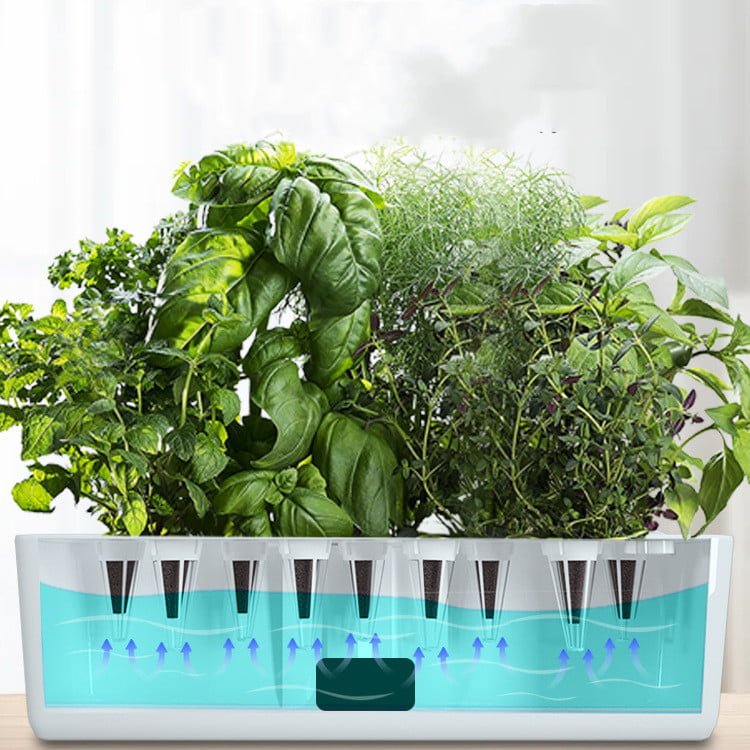
Soilless Hydroponics: 9-Hole Smart Veggie Growth Light
$160.90Select options This product has multiple variants. The options may be chosen on the product page -

Garden Tools: Compact Small Shovel for Household Use
$26.45 – $126.69Select options This product has multiple variants. The options may be chosen on the product page -

Transparent Hydroponic Glass Bottle Decorative Flower Maker
$24.44 – $25.80Select options This product has multiple variants. The options may be chosen on the product page -

Soilless Hydroponics: Patio Blossom Grow Light Box
$140.25 – $146.25Select options This product has multiple variants. The options may be chosen on the product page